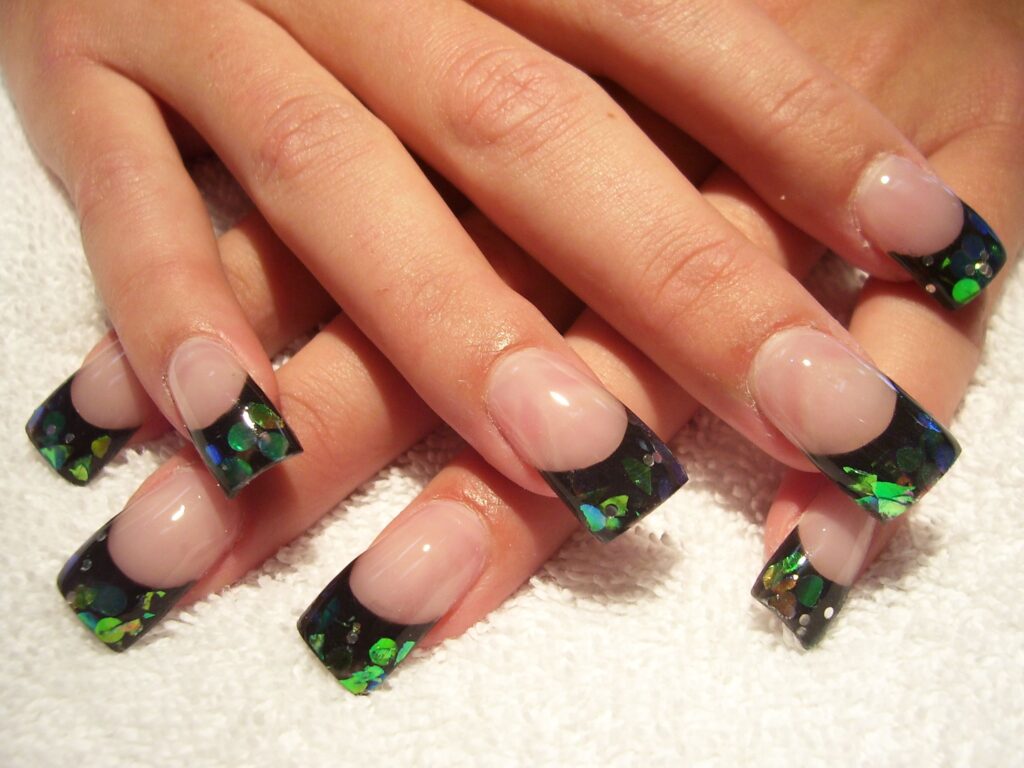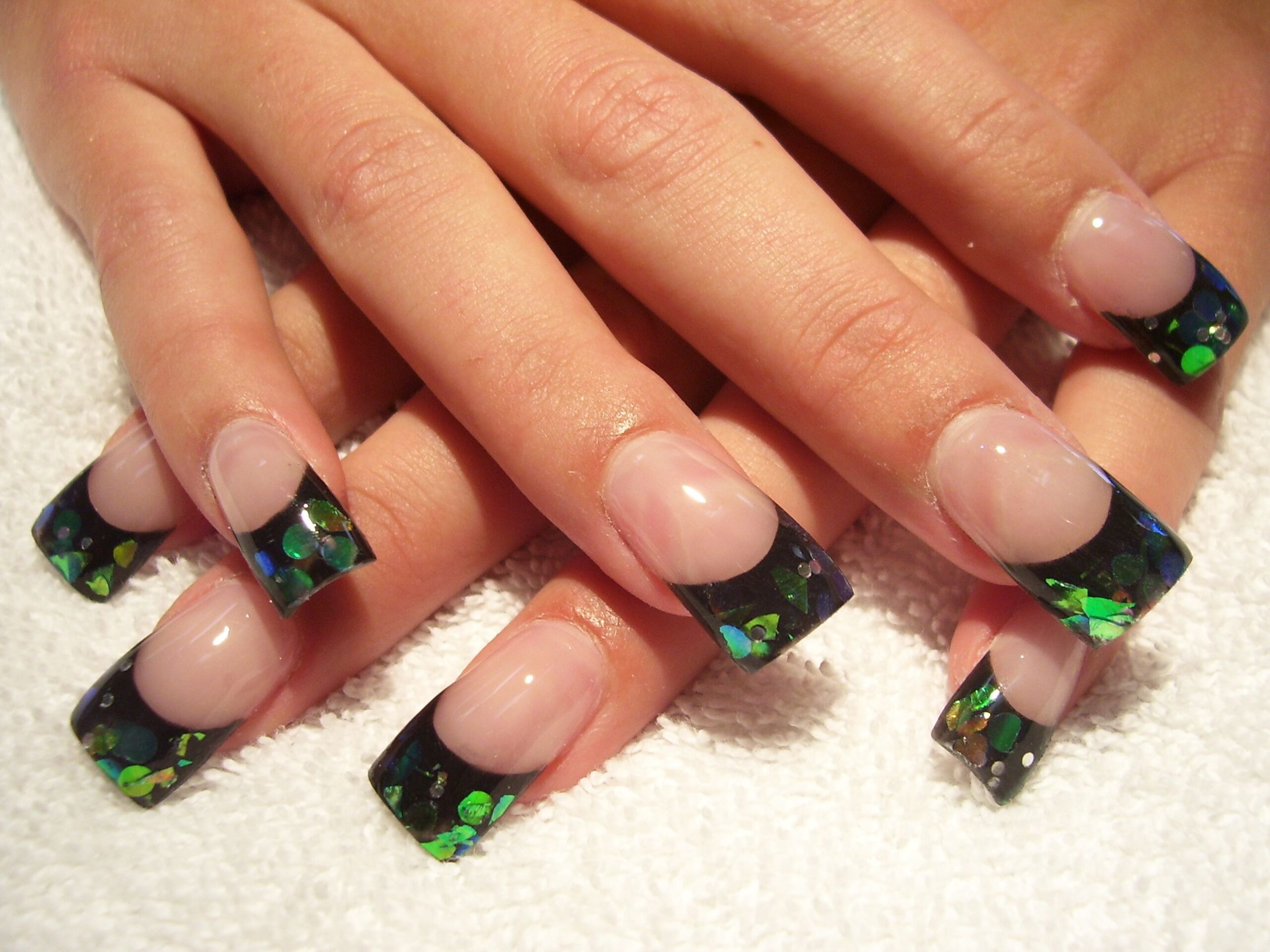
Green Nail Underneath Acrylic: Causes, Treatment, and Prevention
Discovering a green discoloration beneath your acrylic nails can be alarming. This condition, commonly referred to as “green nail,” is often caused by a bacterial infection. Understanding the causes, effective treatments, and preventive measures is crucial for maintaining healthy nails. This article delves into the specifics of green nail underneath acrylic, providing comprehensive information to help you address and prevent this common nail ailment.
What is Green Nail Syndrome?
Green nail syndrome, also known as chloronychia, is a bacterial infection of the nail caused by Pseudomonas aeruginosa. This bacterium thrives in moist environments and can easily colonize the space between the natural nail and artificial enhancements like acrylics. The characteristic green color, ranging from a pale greenish-white to a dark green-black, is a direct result of the bacteria producing pyocyanin, a green pigment.
It’s important to note that green nail is not a fungal infection, although it can sometimes be mistaken for one. The treatment approaches for bacterial and fungal infections differ significantly, making accurate diagnosis essential.
Causes of Green Nail Underneath Acrylic
Several factors contribute to the development of green nail underneath acrylic:
- Moisture Retention: The primary cause is moisture trapped between the natural nail and the acrylic overlay. This creates a breeding ground for bacteria.
- Poor Nail Preparation: Inadequate preparation of the natural nail before acrylic application can lead to lifting and separation, allowing moisture to seep in.
- Improper Acrylic Application: Gaps or bubbles in the acrylic application can trap moisture and debris, fostering bacterial growth.
- Damage to the Natural Nail: Injury to the nail, such as from improper acrylic removal or trauma, can compromise the nail’s integrity and increase susceptibility to infection.
- Unsanitary Tools and Practices: Using contaminated nail tools or visiting salons with poor hygiene standards can introduce bacteria to the nail bed.
Identifying Green Nail: Symptoms and Diagnosis
The most obvious symptom of green nail is the greenish discoloration of the nail. Other symptoms may include:
- Softening or thickening of the nail
- Separation of the nail from the nail bed (onycholysis)
- Pain or discomfort (rare, but possible if the infection is severe)
- Brittle or crumbly nails
Diagnosis is typically based on visual examination. A healthcare professional may take a sample of the nail for culture to confirm the presence of Pseudomonas aeruginosa, especially if the infection is severe or unresponsive to initial treatment.
Treatment Options for Green Nail
Treating green nail requires addressing the bacterial infection and preventing its recurrence. Here’s a breakdown of common treatment options:
Over-the-Counter Treatments
For mild cases, over-the-counter antifungal or antibacterial nail solutions may be effective. These solutions often contain ingredients like tolnaftate or undecylenic acid. However, it’s crucial to confirm with a healthcare professional that the condition is indeed a bacterial infection and not a fungal one before using these products. Apply the solution as directed, ensuring it reaches the affected area beneath the nail.
Prescription Medications
In more severe cases, a doctor may prescribe topical or oral antibiotics. Topical antibiotics, such as ciprofloxacin or gentamicin, can be applied directly to the affected nail. Oral antibiotics are typically reserved for infections that have spread beyond the nail or are unresponsive to topical treatments.
Home Remedies
While not a substitute for medical treatment, certain home remedies can help support the healing process:
- Vinegar Soaks: Soaking the affected nail in a solution of equal parts white vinegar and water for 10-15 minutes daily can help inhibit bacterial growth.
- Tea Tree Oil: Tea tree oil has natural antiseptic properties and can be applied topically to the affected area. However, it’s important to dilute tea tree oil with a carrier oil (such as coconut or olive oil) to avoid skin irritation.
- Good Hygiene: Keeping the affected nail clean and dry is essential. Avoid prolonged exposure to water and wear gloves when doing tasks that involve getting your hands wet.
Professional Treatment
A podiatrist or dermatologist can provide professional treatment for green nail. They may debride the affected nail to remove infected tissue and improve the penetration of topical medications. In severe cases, surgical removal of the nail may be necessary.
Preventing Green Nail Underneath Acrylic
Prevention is key to avoiding green nail underneath acrylic. Here are some essential preventive measures:
- Proper Nail Preparation: Ensure your nail technician properly prepares your natural nails before applying acrylics. This includes cleaning, buffing, and dehydrating the nail surface.
- Choose a Reputable Salon: Select a nail salon with high hygiene standards. Make sure they sterilize their tools between clients and use fresh supplies.
- Avoid Damaging Your Nails: Be gentle with your nails and avoid picking or biting them. Improper acrylic removal can damage the natural nail and increase the risk of infection.
- Regular Maintenance: Get your acrylic nails filled regularly (every 2-3 weeks) to prevent lifting and separation.
- Keep Nails Dry: Minimize moisture exposure by wearing gloves when washing dishes or doing other wet tasks. Dry your hands and nails thoroughly after washing.
- Consider Taking Breaks: Give your natural nails a break from acrylics periodically to allow them to breathe and recover.
- Promptly Address Issues: If you notice any lifting, separation, or discoloration of your acrylic nails, seek professional help immediately. Early intervention can prevent the infection from worsening.
The Importance of Professional Advice
While this article provides valuable information about green nail underneath acrylic, it’s not a substitute for professional medical advice. If you suspect you have a nail infection, consult a doctor or podiatrist for proper diagnosis and treatment. Self-treating can delay appropriate care and potentially worsen the condition. A healthcare professional can accurately identify the cause of your nail problem and recommend the most effective treatment plan.
Living with Green Nail: Tips for Management
Dealing with green nail can be frustrating, but with proper management, you can effectively address the infection and restore your nail health. Here are some additional tips for living with green nail:
- Be Patient: Nail infections can take time to heal. Be patient and consistent with your treatment plan.
- Avoid Acrylics During Treatment: Refrain from wearing acrylic nails until the infection has completely cleared. Applying acrylics over an infected nail can trap moisture and exacerbate the problem.
- Maintain Good Hygiene: Practice good hand hygiene to prevent the spread of infection. Wash your hands frequently with soap and water, and avoid sharing nail clippers or other personal items.
- Strengthen Your Nails: Once the infection has cleared, focus on strengthening your natural nails. Use a nail strengthener and avoid harsh chemicals or excessive filing.
Conclusion: Taking Control of Your Nail Health
Green nail underneath acrylic is a common but treatable condition. By understanding the causes, symptoms, and treatment options, you can take proactive steps to protect your nail health. Remember to prioritize proper nail hygiene, choose reputable salons, and seek professional advice when needed. With the right approach, you can effectively prevent and manage green nail, ensuring your nails remain healthy and beautiful. Protecting your nails from moisture and bacteria is paramount. If you suspect a green nail, consult a professional. This ensures accurate diagnosis and prevents further complications.
[See also: Fungal Nail Infections: Symptoms and Treatment]
[See also: Acrylic Nail Application Techniques]
[See also: Nail Salon Hygiene: What to Look For]

